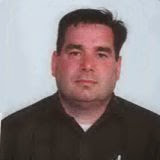- Fill out the five-minute online application.
- When approved, review and electronically sign the loan agreement.
- Get up to £400 deposited directly into your current account today.
After your first loan, you may qualify for a higher loan amount of up to £1500
What happens next?
On your next payday, the loan amount and fee will be automatically deducted from your bank account. Click here for additional information.What is a payday loan?
A payday loan, sometimes referred to as a cash advance, is a short-term, small-principal loan used by people just like you for immediate money needs. Ranging from £50 - £1500, these loans are funded directly into your current account and debited (plus fees) upon your next payday.What are the fees associated with a payday loan?
With a payday loan from QuickQuid, all fees and charges are upfront, so there are no surprises. Simply visit our Rates & Terms to learn about the fees associated with a payday loan from QuickQuid.Learn More about the UK’s Trusted Online Lender!
QuickQuid is one of the UK’s leading online payday loan lenders, helping hardworking Britons just like you find a convenient and private way to bridge the gap between paydays. Our online application is quick and easy to complete. When approved by 14:30, funds are deposited the very same day. There’s nothing to fax and no extra paperwork to fill out.As a fully licenced lender in the UK, we are dedicated to responsible lending practices. QuickQuid is operated by Cash America Intl. Inc., one of the leading providers of short-term consumer loans and cash advances in America.
Still have queries?
Our Application Support team is available to help answer all of your application questions at 08081017477Terms and Conditions apply. Finance charge will be between £10 and £14.75 per £50 borrowed. Typical 2356% APR. †Loan amounts are based on consumer's credit history and ability to repay loan. Not everyone may qualify for £1500 ‡QuickQuid performs traditional credit checks, while still accepting those with less-than-perfect credit. QuickQuid verifies applicant information via various national databases. §Funds will be deposited the same working day, if approved by 14:30. ¶Approval may take up to 30 minutes in most cases. Payday advances should be used for short-term financial needs only, not as a long-term financial solution. Customers with credit difficulties should seek credit counselling.




